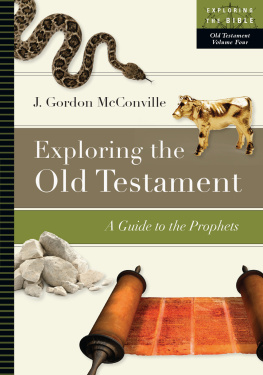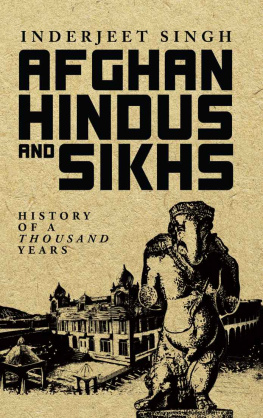ORIGIN OF THE SIKHS
CHAPTER I.
Table of Contents
ORIGIN OF THE SIKHS.
Of all the many peoples of India none possesses for us greater or more varied historical interest than the Sikhs, a people who four hundred years ago as a reformed religious sect sprang from the ranks of the Jats, a numerous as well as the most important agricultural tribe in the Punjab, descended from the ancient Scythian Get. They stand out prominently as men of action, who have preserved inherited racial characteristics foreign to Orientals, and evolved themselves by the strength of their own arms into one of the finest military types to be found anywhere. Their story furnishes a stirring and romantic chapter in the world's history, carrying the imagination back in full flight over the lapse of centuries.
Taking their rise among the disciples of the peaceful Nanak, a Jat Hindu religious reformer, they ultimately, under the pressure of persecution, became a community of warriors, who by the genius of a young Sikh chief, Ranjit Singh, were welded into a nation at the dawn of the nineteenth century. After they lost his strong guiding hand they struggled desperately with us for supremacy in several pitched battles on the Sutlej in 184546, when we found them indeed foemen worthy of our steel. Though then disastrously defeated, they doggedly clung to the idea that, after all, they were a match for the British, and rose a second time three years later. Again they fought with all their vigorous might, but being completely vanquished in the open field, they then, like brave men as they are, submitted to the decree of war, and in 1849 were absorbed with the Punjab into the British Indian Empire. They rose a third time in 1857, but then it was shoulder to shoulder with us to aid in beating down the revolt of our native army in Hindostan, when they flocked in thousands to the standards of their late conquerors at the summons of Sir John Lawrence, the great Pro-Consul of the Punjab, whose good government had converted them in a few years into loyal subjects of the British Crown. None have fought more stoutly and stubbornly against us, none more loyally and gallantly for us, than the Sikhs. They have taken part with us in many a "far-flung battle-line" in Asia and Africa, and become the symbol to India of all that is loyal and courageous. Wherever there has been hard fighting to be done, there they have been found in the forefront, maintaining their high reputation for steadfast fidelity, dogged tenacity, and dauntless couragethe undying heritage of the Sikhs. As they fought for their Gurus and for their Maharaja, so they have fought for Britain. Loyalty is in their blood.
The Punjabthe land of the five rivers, as the name signifiesis the home-land of the Sikhs. Through it passes the great highway from Central Asia, along which from the remotest antiquity invading hosts have marched bent on the plunder and conquest of India. In prehistoric times hordes of Aryans and Scythians surged through its northern mountain gateways. There Alexander and his Greeks fought and conquered, annexing it as a province of Macedon, while from the eleventh to the eighteenth century Afghan, Tartar, and Persian armies made it the scene of incessant war. There the battles were fought for the rich prize of Hindostan. Bred in a locality which has had to bear the brunt of every invasion, and imbued with the traditions of these long centuries of tumult, the peasantry were as proficient with the sword as with the plough, passing to and from the pursuits of war and peace according to the times.
The origin of the Jat tribe has been the subject of much discussion among distinguished oriental writers, but the weight of authority is all in favour of it being a relic of the Scythians, who at various times before and after the Christian era, swarming off from their camping-grounds in High Asia, pushed their way into the Punjab and established their dynasties there with the northern form of Budhism. The Indo-Aryans, who had occupied India many centuries before, vainly attempted to stem the torrent of these fresh invaders from the north, and waged constant war with them until, according to ancient legendary history, they gained a great victory in the middle of the sixth century a.d. and "freed India from the Huns," by which name these Scythians were also known. After this Budhism gradually gave way to the ascendancy of the Brahmans, under whose influence Hinduism had lost all resemblance to the simple old religion taught in the Vedasthe worship of one Supreme and only God.
We have but a dim outline of these early times from ancient Indian literature, Greek and Chinese writers, traditions, temple inscriptions, and coins. A portion of the Scythian invaders, descendants of the Massa-Getas of old Asia, were called Getes, from whom the modern Jats are said to have sprung, the name having been so transposed in progress of time. Arrian, the Greek historian of Alexander's campaign in Asia, mentions that the Getes, the Indo-Scythes as he terms them, who served as allies of Darius, formed the lite of his army in the great battle of Arbela on the Tigris, 331 b.c. , when the Persian Empire, which then extended into the Punjab, was overthrown by Alexander. He dwells with pleasure on Indo-Scythic valour. Colonel Tod, the most scholarly of Indian writers on the old races, in his classical 'Annals of Rajasthan,' compiled eighty years ago, identifies the Jats of his day with the ancient Scythian Get of Central Asia mentioned by Arrian, tracing their descendants under the names of Gete, Yothi, Yuti, Jote, to Jit and Jat, the last two being those by which the tribe was then known in Rajputana and the Punjab. He also describes an existing old temple inscription which shows that the Jits were in power in the Punjab in the fifth century a.d. the memorial of a Jit prince of Lalpura dated 409and observes, "These Jit princes of Lalpura in the Punjab were the leaders of that very colony of the Yuti from the Jaxartes who, as recorded by De Guignes, crossed the Indus in the fifth century and possessed themselves of the Punjab." Apparently these Jits were one of the most important of the Scythic tribes, and entered the Punjab in large numbers at the same time as their congeners the Goths were invading Italy. This was their last irruption in force into India. Small bodies of emigrants are said to have continued to follow up to the eleventh century, when the Getic Empire on the Oxus was overwhelmed in the tide of Islamism, many fugitives then fleeing to join their kind in the Indus valley, where they formed a powerful community, as is shown in the interesting records of the first invasion of India by Mahmud of Ghuzni, in the eleventh century, which led to the occupation of Lahore, and the establishment of the Mahomedan Empire in India after a struggle on the frontier lasting for two centuries.
The Jats now emerged from the nebulous region of their history, and henceforward they were never lost to sight. At every step taken by the Mahomedan invaders from the north they encountered the Jats, who showed themselves a power to be reckoned with. They so vigorously opposed Mahmud's army in the passage of the Indus, and harassed his line of march, that he had in person to lead his troops against them in 1027. The famous Tamerlane in the fourteenth century, at the head of his mighty Tartar host, felt their weight, and waged a war of extermination against them; while the Emperor Baber in his Memoirs writes in 1525 that in all his expeditions into India he was assailed by multitudes of Jits. These Afghan and Moghul invaders knew them by the name of Jits, but they were then known in the Punjab as Jats. Their early settlements were along the whole valley of the Indus from the north down to Sindh. Pliny and Ptolemy in their writings mention the Jatii of these regions. By the sixteenth century they had spread over the Punjab to the deserts of Rajputana and south to the banks of the Jumna as the results of wars and tumults following the Moslem invasions, when they were brushed aside for the time. To-day they are found in all these localities rooted to the soil. Among them the tradition is still strong of the Central Asian region being the cradle of their race. As the latest comers from the bracing north, recruited for several centuries by fresh blood, and established in a climate less liable to lead to deterioration than that of the plains of Hindostan, the Jats have maintained their hardy northern strain, and with it physical superiority and force of character.









![Kyle J. Foley - John Bell Hood’s Division In The Battle Of Chickamauga: A Historical Analysis [Illustated Edition]](/uploads/posts/book/291124/thumbs/kyle-j-foley-john-bell-hood-s-division-in-the.jpg)



